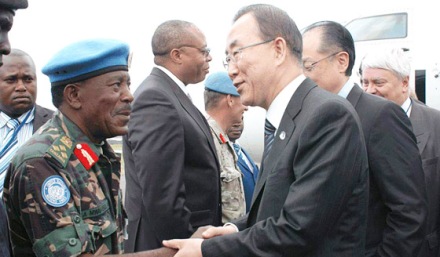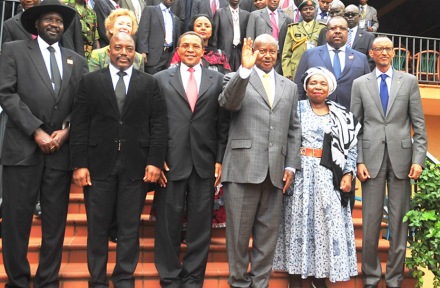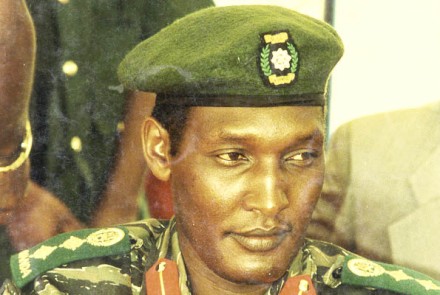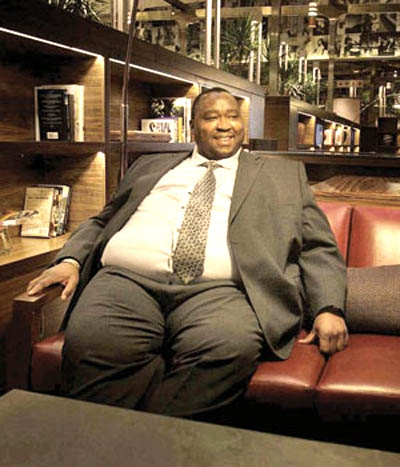![Cartoonist Gado's take on current sentiment toward Kenya media.]()
Cartoonist Gado’s take on current sentiment toward Kenya media.
KENYA’s mainstream media has got a lot of stick since the March 4, 2013 elections.
The election ended in controversy, with CORD coalition candidate (former Prime Minister) Raila Odinga going to court to allege that the election commission had rigged the vote in favour of (now President) Uhuru Kenyatta. Raila took his complaint to the Supreme Court, which unanimously ruled that Kenyatta won fair and square.
Though many criticised the Supreme Court decision and continue to deride the Independent Electoral and Boundaries Commission (IEBC), these are state bodies that can recover their reputation with a change of leadership or a single future election. However, the media are private entities, and perhaps its the single non-state actor to come out worst from the election. It might, therefore, yet pay the price in dollar and cents in the long term.
It was, and continues to be, accused of having effectively jumped into bed with election cheats, and failing to be aggressive over the problems that plagued the controversial March election “for the sake of peace”.
Also, that it is sucking up and massaging the belly of the Jubilee government, because of opportunism, fear, and thinly disguised pro-government partisanship.
The recent event where editors had breakfast with President Kenyatta and Deputy President William Ruto, and some of them openly scouted for jobs, and others fawned over the big men in a televised event brought a flood of scorn from Kenyan blogs and social media.
![Boniface Mwangi much talked about exhibition of the 2008 post-election violence photos in Nairobi: There is still little appreciation of how that year deeply scarred journalists.]()
Boniface Mwangi much talked about exhibition of the 2008 post-election violence photos in Nairobi: There is still little appreciation of how that year deeply scarred journalists.
But could there be more than meets the eye in all this? While on the face of it it might seem like the media and government are exchanging sleepovers, the reality is rather different and paints a more complex picture.
The Kenya media might be having a crisis, but it is not the one most critics think it is. To understand what is happening today, one needs to step back many years. To begin with, there is something very unusual about Kenya media that one needs to go to as far as South Africa in Africa to find — Kenya is the only country in the region with INDEPENDENT and PRIVATE newspapers that are older than 50 years, and also happen to be market leaders.
The Standard newspaper, founded in 1902 as the African Standard, is the oldest continuously published independent newspaper in East and Central Africa. However, The Witness (previously The Natal Witness) in South Africa was founded in 1846. The Cape Times was born in 1876, while the top-selling weekly The Sunday Times followed on the heels of The Standard here in Kenya in 1906.
The Daily Nation was founded in 1960, after the Aga Khan acquired the Kiswahili title Taifa from which the present giant Nation Media Group started life, in 1959.
In the rest of East Africa, newspapers, even state-owned ones like the New Vision in Uganda, were born after regime changes or democratic transitions. All the newspapers on the streets of Uganda today were born after President Yoweri Museveni came to power as a victorious guerrilla leader in 1986.
![For nearly six months before the March 2013 poll, there were weekly peace concerts in all corners of Kenya. Such events helped galvanise a consensus around "peace above all else" agenda.]()
For nearly six months before the March 2013 poll, there were weekly peace concerts in all corners of Kenya. Such events helped galvanise a consensus around “peace above all else” agenda.
One could argue that Daily News in Tanzania is a state-owned newspaper that is older than 50 years. Wrong. Daily News might trace its roots to 1930 when the Kenya East African Standard first published it, but its current incarnation is a result of a merger that happened in the nationalisation wave of the 1960s.
However, nearly all the independent newspapers in Tanzania were born after one-party rule ended and the country adopted a multiparty system in 1992.
The point here is that it is very difficult for private and independent African newspapers to survive through many political eras, and it is particularly hard in East, Central, and West Africa — and nearly impossible in North Africa. One reason for this is because there is little continuity. Because government changes are frequently violent or contentious, it is often very difficult for media that existed during the old or overthrown order to find acceptance in the new era because it is viewed of having cohabited with an illegitimate order. And if they survive, unless they undergo dramatic reinventions as the Sunday Times did in South Africa, they become marginal players.
Not in Kenya, where The Nation and The Standard have a stranglehold on the market – although, to prove the point, the younger 20-year-old Nation overtook the 78-year-old Standard in 1980 and has never looked back. That said, the real surprise is that the Nation and The Standard have survived as private media through so many transitions; from colonialism to the modern multiparty-new-constitution era, and are still able to lock down the market.
It is difficult for media to go through so many periods and still crusade for popular and populist causes, and that seems to be the case in Kenya. In most of Africa, the progressive phase of media lasts about 10 years. After that, especially if it finds commercial success, it becomes what is popularly referred to as Establishment media — it ceases to aggressively challenge the political system, becomes vested in “stability”, and begins to worry about what will happen if the system breaks down. In many ways it is both a necessary and inevitable development.
In the period between 1990 and 2002 when the big battle against one-party rule, for multipartyism, and for political reform raged in Kenya, the Nation was seen as the leading media champion for those reforms.
That, however, was quite unusual because it was over 30 years old then and had also been the foot soldier for Kenya’s independence. Yet there it was also being involved in a second equally spirited fight for multipartyism and reform. Ordinarily, rich as it already was then, it should have settled down to count its shillings, not take such risks.
The seeming capitulation and soft-pedaling from mainstream Kenya media that critics say is happening today, therefore, is a settling down in an Establishment mode that is many years overdue.
If one takes a long-term evolutionary view, this settling in into a fat comfortable zone is a good thing. It creates opportunities for new voices, new media, born out of the concerns of the age, to emerge. If you think of it, much as I may enjoy being a journalist at Nation, I am not blind to the fact that there is something undemocratic in the fact that the Nations have shaped Kenyan politics for nearly 55 years now, and The Standard for 101!
![To mark its 50th anniversary in 2010, Nation Media Group held a big conference on the Africa media: The years ahead will pose even tougher challenges.]()
To mark its 50th anniversary in 2010, Nation Media Group held a big conference on the Africa media: The years ahead will pose even tougher challenges.
If they are taking a back seat, one can see why that might be a good thing, and democrats should be glad.
Against this background, I strongly believe that it is too rash to say the timing of, especially, the older Kenya media “softness” has much to do with its alleged capitulation to the flirtations of the Uhuru-Ruto government.
It shouldn’t be forgotten that after Mwai Kibaki became President at the end of 2002 at the head of the National Rainbow Coalition (Narc), the same situation akin to what we are seeing today happened. The media had been part of the pro-democracy crusade, and Kibaki’s election was also its triumph. Many of its allies in civil society became big men and women in the Narc government.
The pressure for the media to cash in its democracy activist chips was very high, as was the distraction of the seductions it faced from its former friends in civil society, who were now in government. Getting beyond that point was very difficult, and I am not sure the media quite succeeded.
But the biggest blow came in the very divisive Kenya election of December 2007, the controversy over Kibaki’s re-election, and the post-election violence that followed.
The role that sections of the media played in fanning ethnic hatred, and framing the political contest in ways that made the post-election slaughter in which nearly 1,500 were killed and 600,000 displaced from their homes almost inevitable, was disgraceful.
Then Kass FM’s Joshua arap Sang was fingered by The Hague and charged with fanning murderous hate. That had another chilling effect.
These experiences shook most Kenyan journalists and shifted mainstream media toward a feeble safe middle position. Some of the most important factors that caused this change were not reported. In many parts of the country, the Nation had to pull out its bureau chiefs – and even close some down temporarily.
Generally, 2007 was very bad for journalists because at almost every rally, they were being attacked, and toward the end, there were many that some media couldn’t cover.
A group of NTV journalists was trapped in the Rift Valley when the post-election violence broke out, and was spirited out in a rescue operation at the last minute when death squads were closing in on them. The Standard had its delivery pick-ups waylaid and torched.
Most editors decided that in 2013 that they would do all they could not to put their journalists in the kind of danger they faced in 2007/2008. None of them wanted to have the blood of hundreds of dead Kenyans – or murdered journalists – on their doorsteps again.
In several ways, the editors succeeded, because for all the grim reviews, very few journalists were chased out of political rallies in 2013, nor did bureau chiefs have to flee hostile regions. In that sense, some lessons were learnt, and correct responses taken.
However, all these developments came at a time when the country demanded a more aggressive reporting that most editors and media managers were not willing to offer.
The media could justify this standing back partly because there were other people doing the hard in-your face story-telling. There was no shortage of websites, blogs, and social media timelines in which the hot stuff that mainstream were reluctant to touch, was not aired or ventilated. The Kenyan blogosphere and social media became like a freewheeling asylum.
So while those who wanted the sharp attacks, and the naming and shaming of political scoundrels, could not get it on mainstream media they could still find it in domainstream media.
![Will Kenya have a Mail & Guardian-type any day soon?]()
Will Kenya have a Mail & Guardian-type any day soon?
This shrill Kenyan online space only pushed mainstream media higher up on the fence. My own sense is that if it had behaved as it did in 2007/2008, with the passions that were flowing on social media if the mainstream, Kenya would again have gone up in smoke in March.
That movement to the middle and then up to sit on the fence, represented the point at which the leading Kenya media finally became Establishment media. Even though that is not yet a safe place to be.
Today the Nation still gets stick from some people in the State for alleged “anti-government” reporting. While activists condemn the Nation of being soft, most of the criticisms it hears from government is that it is hostile.
Cartoonists like Gado have to contend with many angry attacks from officialdom. I am sure the good people at The Standard, The Citizen, The Star and so on will tell the same story.
Hopefully there will movement beyond looking at the state of the media in just these lenses, because the real cause of frustration should be that what happened in places like South Africa, Uganda, and Tanzania hasn’t happened in Kenya. The multiparty era and the new Constitution period in Kenya, have failed to produce a new media for the age that reports without being weighed down by the baggage of history.
Old media like the Nation and The Standard have Kenayns who have “grown up” reading them; businesses that have developed long-running advertising relations with them; and these people will keep doing business with such media as long as they maintain a view of Kenya that is close to theirs. That is why, even if circulation growth has fallen behind the growth of the population and rise of education, the Kenya media are still becoming more and more profitable.
This lucrative status quo is not something the media is going to upset easily.
Kenya needs new newspapers that have greater freedom to go against the grain and break out of such strait jackets. Therefore the crisis today is not that the main media are too comfortable and restrained. It is that Kenya has failed to produce a newspaper that disrupts or reshapes the political and social landscape like The Monitor that arose in Uganda in 1992, or even like the now-defunct Weekly Review in 1975, Kenya’s first news magazine that broke the mould and challenged the post-independence settlement. South Africa had this by way of the Mail & Guardian, started in 1985 by a group of journalists after the closure of two of South Africa’s leading liberal newspapers, the Rand Daily Mail and Sunday Express; The Independent in the UK in 1986, or even USA Today in 1982. The Mail & Guardian was the first South African newspaper to ignore race as a factor in its news reporting.
The fact that no new newspaper has been born that has successfully explored alternative universes in similar ways, is a constraint imposed as much by Kenyan society and its inflexible block political allegiances, as much as it is a failure of the media.
PS: An abridged version of this article was published in Saturday Nation, Nairobi, at http://www.nation.co.ke/News/Is-it-the-end-or-a-second-life-for-Kenya-media/-/1056/1927960/-/lw6goa/-/index.html
•twitter:cobbo3
Filed under:
Dollars & Sense,
Heroes & Villains,
Naked Chiefs & Emperors Tagged:
Africa regime change,
Aga Khan,
Cape Times,
cartoonist Gado,
crusading,
Daily News,
Democratic transitions,
Establishment media,
Joshua arap Sang,
Kass FM,
Kenya media,
Mail & Guardian South Africa,
Mwai Kibaki,
Natal Witness,
New Vision Uganda,
NTV Kenya journalists,
Raila Odinga,
Rand Daily Mail,
Sunday Express,
Sunday Times South Africa,
Taifa,
Tanzania,
The Hague,
The Independent UK,
Uhuru Kenyatta,
USA Today,
Weekly Review Kenya,
Yoweri Museveni ![]()
![]()
![]()
![]()
![]()
![]()
![]()
![]()
 The man had his faults, including his inability to hold down a marriage (although clearly in his marriage to Winnie Mandela he was the wronged man). However, that also proved something I have always suspected. That too much love for family often undermines the cold rationality and ruthlessness needed to succeed in the modern world (which is why I don’t seek or expect greatness, because I can’t give up loving my children).
The man had his faults, including his inability to hold down a marriage (although clearly in his marriage to Winnie Mandela he was the wronged man). However, that also proved something I have always suspected. That too much love for family often undermines the cold rationality and ruthlessness needed to succeed in the modern world (which is why I don’t seek or expect greatness, because I can’t give up loving my children).





































































































